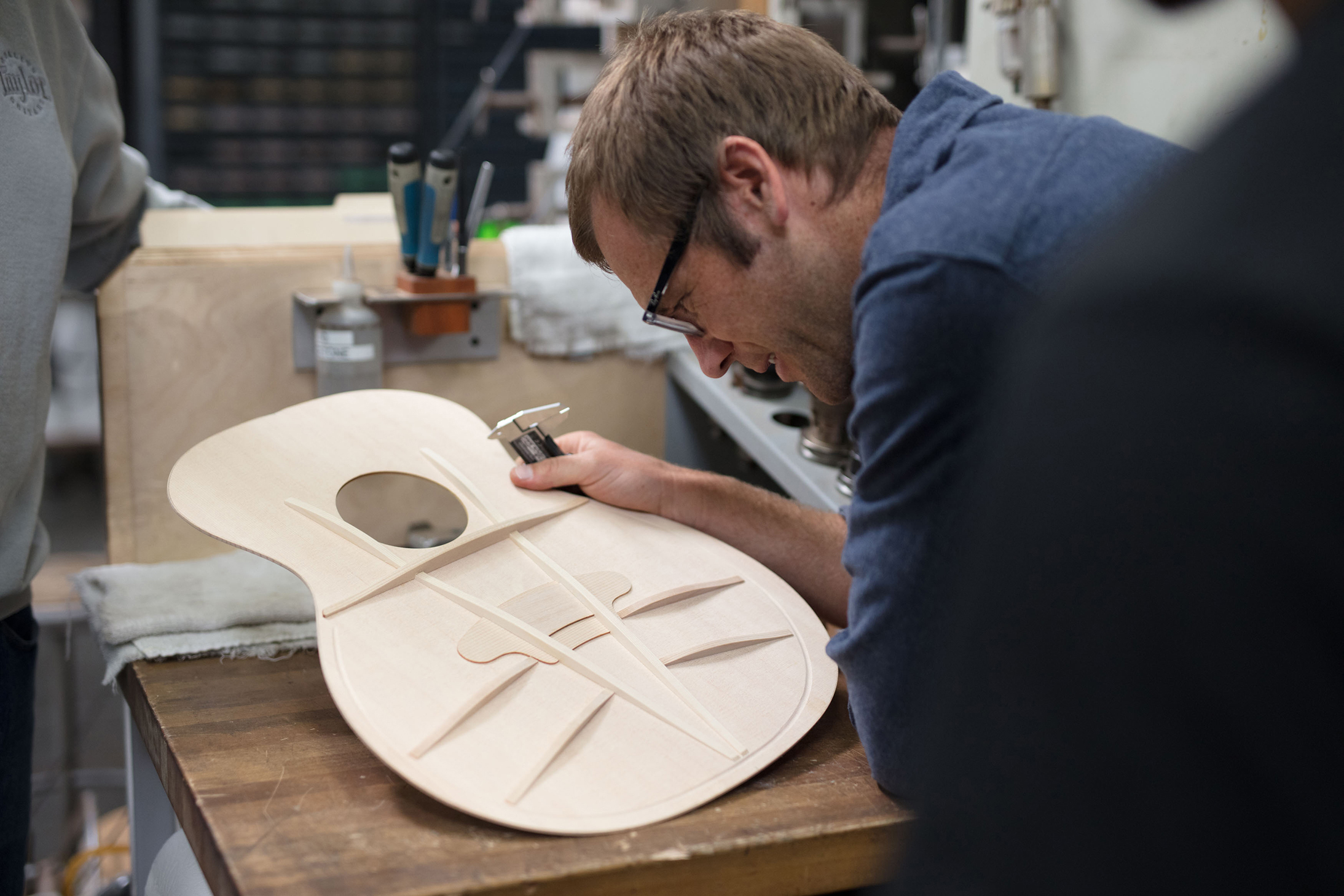From the private workshops of co-founder Bob Taylor and master luthier Andy Powers, through neck construction, wood treatment, and beyond, every room in the Taylor Guitars factory in El Cajon, California, is built around a commitment to innovative guitar craft. With inventions like its groundbreaking neck-joint design and celebrated Expression System electronics, the company has not only introduced some of the most important breakthroughs in modern acoustic lutherie, but has made them available across a massive range of guitars.
This week, Taylor is set to introduce the latest in its long series of acoustic guitar innovations with the new V-Class bracing pattern. This new system has reimagined guitar bracing for the latest generation of instruments and players, weighing modern performance demands and tonal preferences to design a bracing method unlike anything else in the history of acoustic guitars.

A little context on acoustic guitar bracing: bracing refers to the patterns of wood that sit on the underside of the soundboard or top of an acoustic guitar. Historically, some guitars have used "ladder" bracing, which looks exactly as the name implies, with multiple lengths of wood stacked horizontally across the width of the guitar. For the last century or so, however, a majority of acoustic guitars have used some form of X-style bracing, which centers around two pieces crossing in a X formation.
With the V-Class concept, Taylor is taking this evolution a step further with a design that sees two long strips that run on either side of the sound hole forming a V as they get to the bottom of the guitar. There are additional horizontal strips, as well as a reinforcing plate, that work in conjunction with the longer pieces.

According to Taylor, this new method results in enhanced tonal balance, sustain, and volume for any guitar that incorporates it. The volume component is especially pronounced with increasingly popular smaller-bodied acoustic guitars that will now be able to rival the output of traditional dreadnought and jumbo shapes.
In a recent profile in Music Trades magazine, Taylor Master Guitar Designer and the brains behind V-Class bracing, Andy Powers, describes the challenges of trying to create a guitar with both ample volume and sustain. Sustain requires rigidity in the guitar's body while volume requires movement of the soundboard. According to Powers, the new V-style bracing "... provides rigidity in the center of the guitar, delivering good sustain, but it has a lot of flex at the sides for volume.”
Powers says that the V-Class bracing also provides better intonation for the guitar, which in the age of electronic production and vocal correction, has never been more important. “The fundamentals of each note are stronger, with fewer stray harmonics, and they ring more evenly up and down the neck,” Powers says.

To start, the new V-Class bracing will be introduced to three of Taylor's highest-end models: the PS14ce, 914ce, and K24ce, along with a new limited K14ce with koa back and sides and a torrefied spruce top that's being offered as part of a new "Builder's Edition" series. edition Eventually, the bracing style will be applied to more and more models throughout Taylor's robust catalog.
Stay tuned for more updates on Taylor’s V-Class bracing and more gear news from the NAMM show this week.
